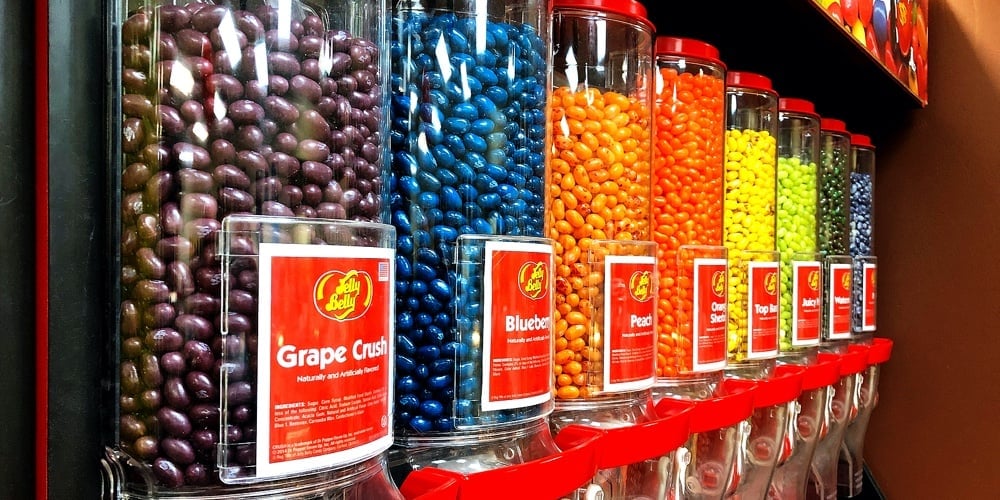I’ll never forget the first time I ate a Jelly Belly. On that day a whole new world was revealed to me and all children of the eighties. No longer were jelly beans bound by the primary colored blandness of green, red, yellow, purple and bleech… er, I mean black. Thanks to President Reagan and his magic beans, we could now choose from exciting and renegade flavors such as orange sherbet, root beer, and buttered popcorn.
Do you remember when you first discovered that you could combine Jelly Bellies to create entirely new flavors? For me, this was probably the best discovery since I cut open my Stretch Armstrong doll to see what was inside. My friends and I would get together, sit in a circle, and see what exciting and new flavors we could create: 2 blueberry + 1 buttered popcorn = blueberry muffin. 2 green apple + 1 cinnamon = candy apple. Life was good.
I was recently thinking about Jelly Bellies as I was doing research on the science of emotion and human behavior for an upcoming seminar. I was drawn to the work of, behavioral Psychologist, Dr. Robert Plutchik. According to Plutchik, there are eight basic human emotions: Anger, Fear, Joy, Sadness, Anticipation, Disgust, Surprise, and Trust. These are basic, primal emotions that drive human behavior. Emotions create feelings, feelings create actions, and actions drive results. I believe that if you can create an emotional response in your members or employees, then you can influence their actions. Plutchik theorizes that more complex emotions such as love or remorse can be attained by simply combining varying states of basic human emotions. For example, the complex emotion of love is made up of the two basic emotions of trust and joy. Optimism is the combination of joy and anticipation, and submission is created by combining trust and fear. And thus, I was immediately reminded of Jelly Bellies again – and their powerful combinations.
Plutchik’s theory is used by fiction writers to use emotions to evoke behavioral responses in the reader. Why not in business? I can’t think of a better model for credit unions to create desired responses in their members.
If you want your members to love your credit union, you must create a platform that incorporates the basic emotions that make up love – which are trust and joy. Trust is created by providing value in a consistent manner; and joy is created by doing it in a fun and pleasing way. When you focus on combining basic emotions to produce the desired result, then people become passionate about buying what you are selling.
If managers want optimistic employees, then two primal emotions are at play: joy and anticipation. Joy is created by creating a stimulating and fun work environment where civility, respect, and support are a part of the culture. Anticipation is created by providing reward, good pay, bonus, and perks.
Member engagement is driven by emotion and the most successful credit unions are the ones that uncover the pains, concerns, problems, fears, and desires of their members – and then focus on the basic emotions that evoke an emotional response that ultimately leads to loyalty.







